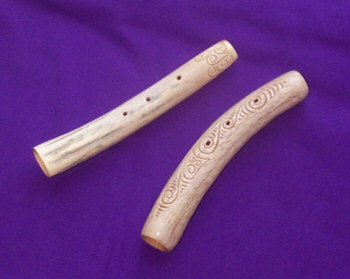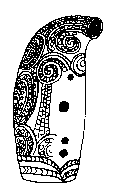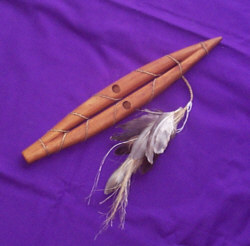MAORI MUSIC
http://www.janesoceania.com/newzealand_maori_music/index.htm
The New Zealand Maori are Polynesian, and have lived in New Zealand ever since approximately the eleventh century A.D. They refer to their homeland as Aotearoa, The Land of the Long White Cloud. In terms of the origins of the Maori, modern evidence, including DNA analysis, confirms the opinion that modern man, in the form of Homo sapiens, first came out of Africa as early as 160,000 years ago. Of the pioneers who moved across Asia, one group moved south-east down through the Indo-Malaysian archipelago, crossing over into Australia during a brief window of opportunity 65,000 years ago when water levels dropped. They also reached Papua, also possibly as early as 65,000 years ago, eventually moving from there across the Pacific.
Archaeologists believe that Polynesian people came from a small central group that spoke the Austronesian language on the island of Taiwan. Genetic studies have also now indicated that the ancestors of this group were the sailors of the great canoes who started out on their journey further back along the trail in eastern Indonesia.
Researchers in New Zealand have also recently concluded that the male and female ancestors of Maori people came from different places. The team, from Victoria University in Wellington, New Zealand, have found that Maori women have genetic markers that suggest their ancestors came from mainland South-east Asia, probably about 6,000 years ago. As they travelled south from island to island, it appears that Melanesian men joined the men and women on the boat, with a small group of people eventually arriving in New Zealand via the Polynesian triangle, about 1,000 years ago.



Indeed, the word Polynesia, which means many islands, comes from the Greek words 'poly' which means 'many' and 'nesos' which means 'island'. Polynesia stretches in a huge triangle from New Zealand in the southwest to Easter Island, 8,000 kilometres away in the southeast and up to Hawaii at its northern point. The Polynesian people are lighter skinned and are generally taller than the Melanesian and Micronesian people.
The Maori view of creation in which all nature was seen as a great kinship tracing its origins back to a single pair, the Sky Father and the Earth Mother, was a conception which they brought with them when they came from Central Polynesia about 1,000 A.D. Furthermore, this belief in a primal pair, as well as the metaphysical idea of an original Void or Darkness, seems to be part of the stock of ideas which the ancestors of the Polynesians brought with them from the west, from the Asian mainland, and which they carried with them as they dispersed into marginal Polynesia. The resultant shift in names and attributes, and the elaboration of themes which occurred throughout the area certainly cannot obscure this underlying unity of ideas.
The name 'Maori' is derived from Ma-Uri, which means 'Children of Heaven'. Their nickname is 'Vikings of the Sunrise', because they are fierce warriors. Originally, they were hunters, but soon became peasants, living off agriculture. Today, approximately 300.000 Maori are mainly living in the cities, but they remain closely connected to their tribes. Their tribal groupings are derived from the people of each canoe, settling New Zealand in the early times.
Traditional Maori villages are fortified with an open space in the centre, called the 'marae', on which the meeting house or 'whare hui' is located. This building represents the symbolic body of the ancestor. Around the fort sites, a palisade with watch tower is built. In these watch towers are suspended alarm gongs comprising huge wooden plates referred to as 'pahu'.
The Maori religion is closely related to nature and to the ancestors. Nature itself is considered a living being and thus the interaction between man and nature is bound by prescripts and rituals. The notion 'tapu' (sacred), from which the word 'tabu' is deduced, is still a central notion in contemporary Maori society.
Tiki are anthropomorphic ornaments representing spiritual beings. Many times they have some kind of deformation, like only 3 fingers and they can be both positive and negative towards mankind. Much of the Maori religion remains intact and many rituals associated with traditional visual arts and traditional music are still carried out with strong ties between songs and magic still remaining. Traditional Maori music, in the main, only used aerophones and idiophones to support the vocals.
Aerophones were mainly of the following types. Koauau, which can be made out of different materials: wood or even a human bone. It is a straight blown flute, blown under an angle, 12 to 15 cm long and with a bore of 1 to 2 cm. When the instrument isn't played, it's worn around the neck. It has 3 finger holes.
 Koauau – primarily made from albatross bones
Koauau – primarily made from albatross bones

Whio is a bone flute made out of an albatross bone. The instrument is 15 cm long, has a diameter of 1.5 cm and 4 finger holes. The instrument was played by men in order to attract the attention of women they longed for. Puukaaea is a wooden war trumpet, made out of two pieces of wood cut lengthwise and hollowed out. Both pieces are again assembled and kept in place by fibres or ropes. The length varies between 1m and 2,5 meter. At one side there is a sculptured wooden mouthpiece and the other side of the instrument is broader and resembles an open mouth. Inside tohu are sculptures, representing the human tonsils and uvula. The puukaaea could be used during the war as a megaphone or as an alarm instrument.
Puutoorino, which is often referred to as a bugle-flute instead of trumpet, because the instrument could also be used as a flute, but originally it was a trumpet. It is about 30 to 60 cm long and is made as the puukaaea out of two pieces of wood, but here widest in the middle and more narrow at both end sides. In the middle are sound holes, mostly in the shape of an eight, are made as the open mouth of a sculptured face. Near the mouthpiece, another face is carved, or a tiki (men/spirit) or a manaia (men/bird). The player placed his hand over the sound hole in order to change the tones of the instrument. Originally, this instrument was mainly used to announce the coming and arrival of a tribal chief.
 Puutoorino
Puutoorino
The name implies the binding of two voices, instrument and human, to create spirit voice. Usually made from two bones joined (i.e., albatross) or wood hollowed, they produce two distinct (male & female) voices, one trumpet-like, one flute-like. Teetere are flax trumpets simply made by winding a leaf to a horn shape. It was probably a children's toy, but could also be used to announce one's arrival in the village. Non-blown aerophones include the Puurorohuu which is a bullroarer made out of a piece of wood. By swinging the bullroarer around, a roaring sound is produced which it was thought would bring rain. The idiophone used comprised the following. Pahuu are wooden gongs: flat slabs of resonant wood, which were horizontally suspended above a platform in the watch tower of the palisade around the fortified village. It was hit in case of danger, but also used to call the men to go to war. Some tribes, living in the woods, carved their war pahuu out of a hollow tree. The wooden slab was sometimes cut away and separated from the tree or sometimes it remained a fixed part of the tree.
Paakuru is an instrument, which is held between the teeth of the player, can be compared to a jew's-harp. It comprised a simple piece of wood of 40 to 50 cm long, 2 to 5 cm broad and 1 cm thick, struck by a little wooden stick. The sound is changed by the position of the mouth and the movements of the lips. Nowadays, the paakuru knows a revival as a whalebone paakuru. Rooria are similar to paakuru, but smaller: only 7 to 10 cm long. Maori lovers use it for intimate conversations. Finally, Tokere are whalebones used as clappers.
 Hue (Gourd) Instruments
Hue (Gourd) InstrumentsHue Puruhau
Deep vibrating sound used to pacify tangaroa (god of the sea).
Hue Puruwai
Dried intact, it is twisted to create "rain" sound with seeds rattling inside.
Poiawhiowhio
Twirled on a string, this instrument imitates various bird songs depending on size and shape of gourds and holes in them. The string inside also vibrates as gourd spins.
Koauau Ponga Ihu
Small gourd with top removed and two small holes. Blowing across the top with one nostril produces flute-like sound.[/size]
Porotiti
Often used as a toy, the alternating spin produces a whizzing or whirring sound. This sound is enhanced by carving the surface, used for healing by spinning over areas of rheumatism or arthritis, the sound vibration massages joints in a similar way to modern ultrasound.
Purerehua
Also known as "Bull-roarer" and made of bone, wood or stone, they are blade-like and swing on a long cord producing a loud, deep whirring that can be heard from a distance. Uses vary from luring lizards, summoning rain and attracting a soul mate to several being played together at a Tangi (funeral).
~~~~~~~
The traditional vocal music can be divided in two categories: the recitatives and the songs. The recitatives have no fixed pitch organisation and the tempo is much higher than the song's tempo. Among the recitatives is a welcome ceremony known as Powhiri. This welcome ceremony is a mixed form. Men shout fiercely, whilst women sing in a melodic way. The Powhiri often starts with the men standing in front of the women. The men make clear they are ready for a battle by shouting, menacing with their weapons and grimacing. After a while, the women gently come to the front, singing and carrying green leaves. The men kneeled down on one knee and put their weapons on the floor. Most of the time a Powhiri ends with a haka (men song) without weapons.
Haka are shouted speeches by men, combined with a fierce dance. Haka Taparahi are performed without weapons and they can give expression to different emotions depending on the situation for which they are performed. Haka Peruperu are performed with weapons and associated with war dances.
Another form of recitative is known as Ngeri and is used to annihilate any form of tapu. Other forms of recitatives are Karakia which are quick incantations and spells. They are used during daily life by both adults and children, but also during rituals. The ritual karakia is difficult and dangerous to execute, because a mistake during the performance will attract bad luck, illness and even the death of the reciter. For very important karakia, two priest reciters are needed in order to alternate the breathing pause, because even the slightest moment of silence could result into disaster. Paatere are mainly performed in group and composed by women in answer to gossip. The texts of paatere consist merely out of summing up of the kinship connections of the author. Kaioraora are like paatere answers to gossip but with a rude, offensive text.
The second form of traditional music are Songs and the Sung Poetry, also called Nga Moteatea, which often consist mainly of laments, but sometimes also consist of love songs and lullabies. Traditionally, sung poetry of this form was accompanied by a koauau flute.
Traditional songs comprise the following forms: Poi, which are songs accompanied by a form of dance in which women hit their body rhythmically with one or two mainly cotton balls attached to the end of a string. Oriori, which are songs composed to teach children of high rank about their special descent and history. Pao are songs originating out of a kind of instant-composing: the composer sings the first couplet and is then repeated by the chorus, and so on. These are songs of local interest. They can be funny or serious.Waiata is the most common category of Maori songs and comprise laments about different topics. Traditionally, waiata are sung in groups and in unisono.
Waiata tangi are laments for the dead. The word 'tangi' means 'weeping'. This form is mainly composed by women. During burial ceremonies, women were expected to show signs of deep grief, for example, by wounding their faces with sharp stones. Sometimes, these waiata were very personal, telling about the composer's emotions and feelings towards the dead. When composed by men, the waiata tangi can also instruct us about the warrior qualities of the dead person. They can also, for example, allude to most of the calamities that can befall mankind.
Finally, waiata ahore are love songs, and waiata whaiaaipo are songs for the beloved one. They are often still laments and tell us about all the misery that a love affair can provoke.
(cont.)